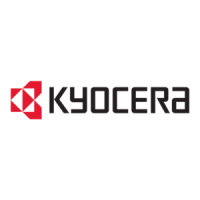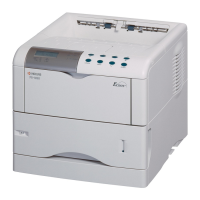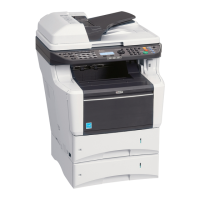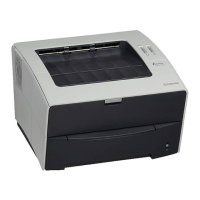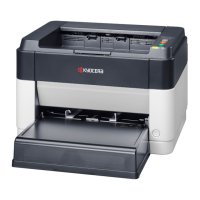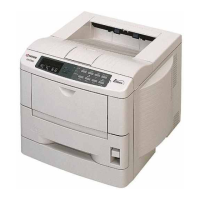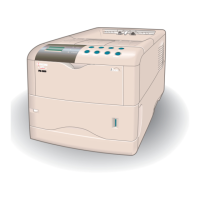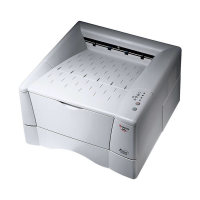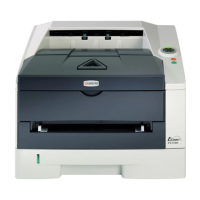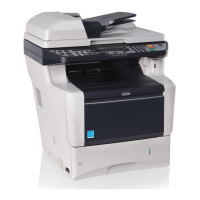
Do you have a question about the Kyocera FS-3040MFP+ and is the answer not in the manual?
| Network ready | Yes |
|---|---|
| Media thickness | 0.11 mm |
| Scan file formats | JPG, PDF, TIFF, XPS |
| Dimensions (WxDxH) | 494 x 497.1 x 545.1 mm |
| All-in-one functions | Copy, Print, Scan |
| Color all-in-one functions | Scan |
| Recommended monthly print volume | 15.000 pages |
| Maximum resolution | 1200 x 1200 DPI |
| Time to first page (black, normal) | 9.5 s |
| Print speed (black, normal quality, A4/US Letter) | 40 ppm |
| Digital sender | No |
| Maximum duty cycle | 200000 pages per month |
| Number of print cartridges | 1 |
| Page description languages | PCL 5c, PCL 6 |
| Memory slots | 2 |
| Processor family | PowerPC |
| Maximum internal memory | 756 MB |
| Sound power level (standby) | 30 dB |
| Sound pressure level (printing) | 55 dB |
| Display | LCD |
| Product color | Black, White |
| Market positioning | Business |
| Paper input type | Cassette |
| Total input capacity | 500 sheets |
| Maximum input capacity | 2.100 sheets |
| Maximum number of input trays | 4 |
| Multi-Purpose tray input capacity | 100 sheets |
| Auto document feeder (ADF) input capacity | 50 sheets |
| Custom media width | 70 - 216 mm |
| Maximum print size | 216 x 297 mm |
| Custom media length | 148 - 356 mm |
| Paper tray media types | Envelopes, Plain paper |
| Paper tray media weight | 60 - 120 g/m² |
| Non-ISO print media sizes | Legal |
| ISO A-series sizes (A0...A9) | A4, A5, A6 |
| ISO B-series sizes (B0...B9) | B5 |
| Maximum ISO A-series paper size | A4 |
| Multi-Purpose Tray media weight | 60 - 220 g/m² |
| Auto Document Feeder (ADF) media weight | 50 - 120 g/m² |
| Standard interfaces | Ethernet, USB 2.0 |
| USB 2.0 ports quantity | USB 2.0 ports have a data transmission speed of 480 Mbps, and are backwards compatible with USB 1.1 ports. You can connect all kinds of peripheral devices to them. |
| Mac operating systems supported | Mac OS X 10.4 Tiger, Mac OS X 10.5 Leopard, Mac OS X 10.6 Snow Leopard, Mac OS X 10.7 Lion |
| AC input voltage | 220 - 240 V |
| AC input frequency | 50 - 60 Hz |
| Power consumption (standby) | 95.8 W |
| Power consumption (PowerSave) | 6.9 W |
| Power consumption (average operating) | 677 W |
| Energy Star Typical Electricity Consumption (TEC) | 3.1 kWh/week |
| Certification | TÜV/GS, CE |
| Copier resize | 25 - 400 % |
| Maximum copy resolution | 600 x 600 DPI |
| Maximum number of copies | 999 copies |
| N-in-1 copy function (N=) | 2, 4 |
| Time to first copy (black, normal) | 7 s |
| Scan to | E-mail, FTP, USB |
| Scanner type | Flatbed & ADF scanner |
| Grayscale levels | 256 |
| Scan speed (black) | 35 ppm |
| Image formats supported | JPG, TIF |
| Sustainability certificates | Blue Angel, RoHS, ENERGY STAR |
| Depth | 497 mm |
|---|---|
| Width | 494 mm |
| Height | 545 mm |
Explains the meaning of various safety symbols used in the manual.
Details the fundamental functions and capabilities of the machine.
Lists and diagrams identifying all external and internal machine components.
Diagram illustrating the internal structure and paper path of the machine.
Overview and procedure for accessing and operating the machine's maintenance mode.
Details specific functions and operations available within the service mode.
Guidance on identifying and resolving paper jams within the machine.
Information on utilizing the machine's built-in error reporting and diagnostic system.
Diagnosing and resolving problems related to print quality and image formation.
Procedures for diagnosing and fixing electrical faults and component failures.
Guidance on troubleshooting issues related to moving parts and paper transport.
Essential safety guidelines to follow before disassembling or reassembling machine components.
Procedures for removing and refitting various Printed Wiring Boards (PWBs).
Instructions for updating the machine's firmware using USB memory.
Diagrams and lists of the machine's electrical components and PWBs.
List and function of the main Printed Wiring Boards (PWBs).
Function and pin assignments of the engine PWB.
Function and pin assignments of the main PWB.
Schematic showing electrical connections between components.
Commands for performing specific maintenance adjustments.
